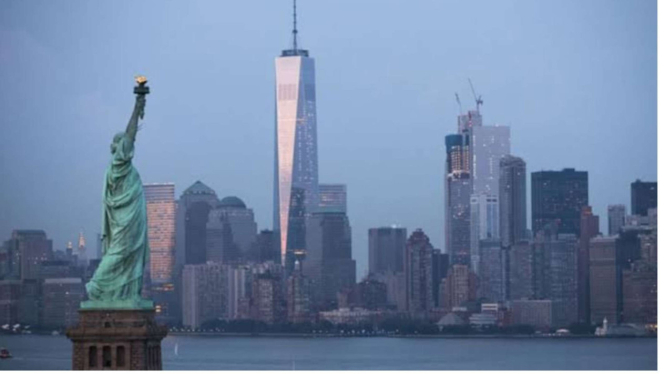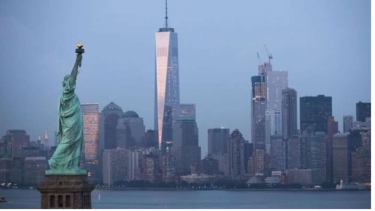- NDTV
VIVA – New geological research warns that the weight of New York City's skyscrapers is actually causing the city, whose more than 1 million buildings weigh nearly 7.7 trillion kilograms, to sink lower into the surrounding waters.
The city nicknamed the Big Apple is dropping closer to the water at a rate of 1 to 2 millimeters per year, "with some areas receding much faster," according to researchers.
While this may not seem significant to the unaccustomed eye, the gradual decline makes New York City particularly vulnerable to natural disasters, based on the lead researcher and geologist Tom Parsons of the United States Geological Survey Lower Manhattan is particularly at risk, and there are concerns for Brooklyn and Queens as well, according to the study.
Iklan Vidy di New York.
- Istimewa
Lower Manhattan is particularly at risk, and there are concerns for Brooklyn and Queens as well, according to the study.
"New York faces significant challenges from flood hazards; the threat of sea level rise is 3 to 4 times higher than the global average along the Atlantic coast of North America. A highly concentrated population of 8.4 million people faces varying degrees of hazard from inundation in New York," They wrote in a recent report.
New York has seen these harsh effects starting more than a decade ago, "Two recent storms caused loss of life and heavy damage in New York City,"
"In 2012, Hurricane Sandy forced seawater into the city, while heavy rains from Hurricane Ida in 2021 overwhelmed drainage systems with heavy runoff in a largely paved city." Parsons and his team wrote.
As bad as hurricanes Sandy and Ida were, Parsons is concerned that the structural integrity of many of the city's buildings could be at risk in the future.
"The combination of tectonic and anthropogenic subsidence, sea level rise, and increased storm intensity implies accelerating problems along coastal and riparian areas," he stated.
"Repeated exposure of building foundations to saltwater can corrode reinforcing steel and chemically weaken concrete leading to structural weakening,"
The threat of severe storms is more likely than in years past, according to Parsons.
The greenhouse effect "appears to be reducing the natural wind shear barrier along the United States (US) East Coast, which will allow for more frequent high-intensity storm events in the coming decades." Parsons said.
Remarkably, many New York real estate additions built since the devastation of hurricane Sandy are not taking the situation seriously enough.
"New York City ranks third in the world in terms of assets exposed to future coastal flooding and 90% of the 67,400 structures in the expanded post-Hurricane Sandy flood risk area have not been built to floodplain standards," he explained.
New York is emblematic of the growth of coastal cities around the world that are observed to be winding down, which means there is a shared global challenge for mitigation against increased inundation hazards, Parsons concluded.






























